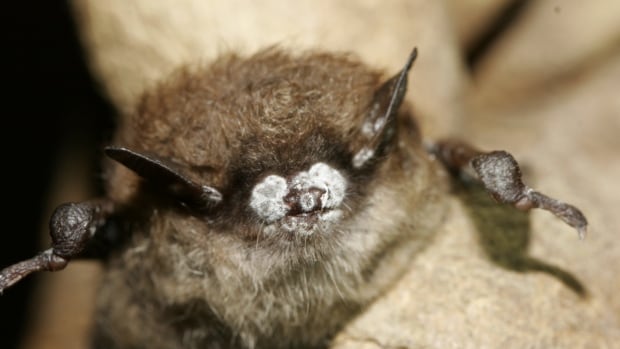A fungus causing a disease that has wiped out bat populations across North America has been detected in British Columbia, the province says.
A statement Monday said the fungus that leads to white-nose syndrome in bats was found in bat guano — or bat droppings — in the Grand Forks area of the Kootenays.
“The [ministry] is working with multiple partners to implement enhanced surveillance for the disease, as well as reduce threats to bat habitat,” read the statement from the Ministry of Water, Land and Resource Stewardship.
“Because there is currently no proven prevention or treatment for white-nose syndrome, the best approach for bat conservation is the reduction of other threats to support healthy, resilient bat populations as they face this disease.”
White-nose syndrome starves bats to death by interrupting their hibernation, which wastes the energy they need to get through the winter.
The disease spreads quickly because bats huddle together to keep warm.
In one cave in Eastern Canada, 98 per cent of bats died. In Montana, where the disease has been present for almost 20 years, bat populations have shrunk by about 90 per cent.
WATCH | B.C. scientists testing new way to combat deadly fungus:
Researchers are looking into a new method of protecting against white nose syndrome, which is decimating bat populations. It slowly weakens the animals until they die of starvation, and has wiped out entire populations in the U.S.
White-nose syndrome first appeared in North America in 2006 in New York state, probably through shipping. It’s spread mostly bat-to-bat, although humans can play a role by carrying spores on their clothes or gear.
The province said staff have been testing for the disease in B.C. since the fungus reached the west coast of the United States in 2016.
The fungus does not affect humans, but the province said anyone who discovers a sick or dead bat should report it and avoid touching the animal with their bare hands.


